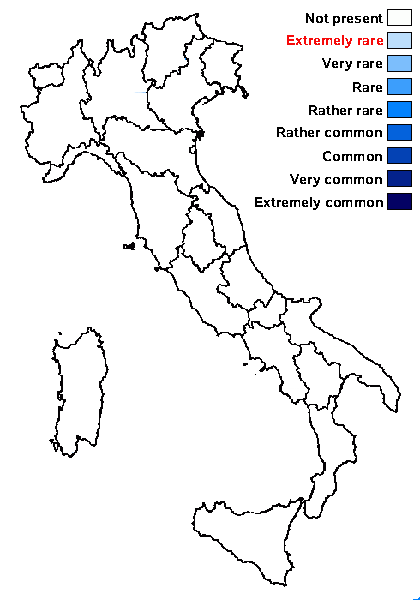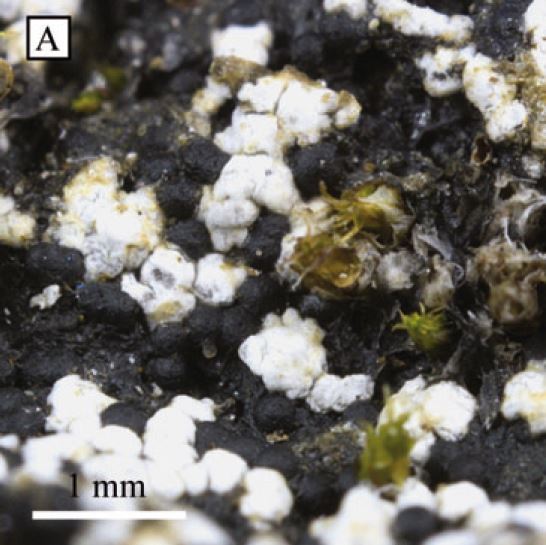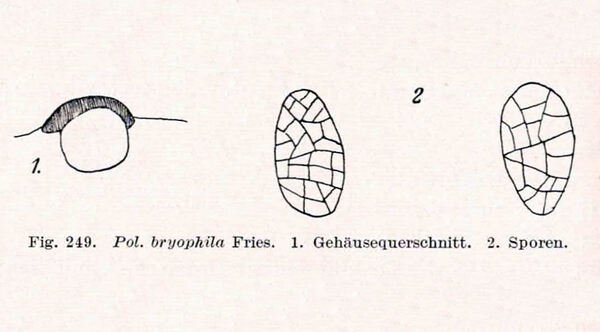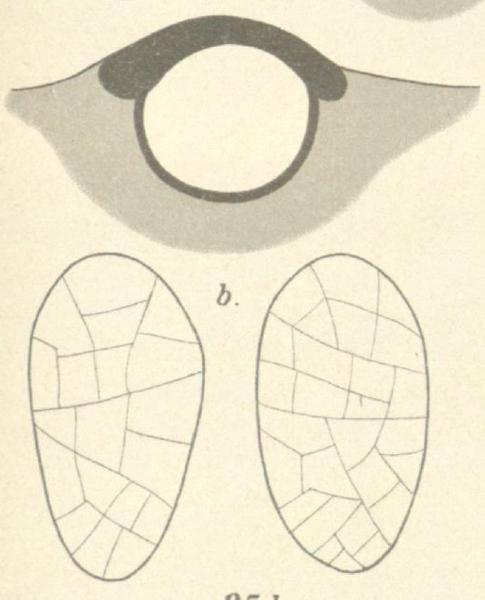Polyblastia bryophila Lönnr.
Flora (Regensburg), 41: 631, 1858.
Synonyms:
Distribution:
Description: Thallus crustose, episubstratic, continuous or consisting of subsquamulose, 0.4-0.8 mm wide, angular, slightly convex areoles, white to pale grey, somewhat glossy, pseudocorticate, usually surrounded by a well-developed, black prothallus. Perithecia black, 0.25-0.35 mm across, globose, projecting or immersed in the thallus at the base, mostly formed along the margins of the areoles. Involucrellum black, well-developed, 23-40 μm thick, covering the upper half of the perithecium, merged with the exciple in the ostiolar region; exciple dark brown in upper part, paler in lower part; hamathecium of periphyses and slender, branched, periphysoids measuring 40-50 x 1-2 μm; interascal filaments absent; hymenial gel I+ red, K/I+ blue. Asci 8-spored, ellipsoid to clavate, K/I-, fissitunicate, the wall thickened above, with an ocular chamber, dehiscent by extrusion of an endotunica to form a delicate rostrum. Ascospores muriform, with 5-7 oblique transverse septa and 3-5 longitudinal septa, hyaline, broadly ellipsoid, (25-)29-35 x 14-20 μm. Photobiont chlorococcoid. Spot tests: K-, C-, KC-, P-, UV-. Chemistry: without lichen substances.Note: a species resembling P. sendtneri, overgrowing mosses and plant debris on calcareous soil; overall distribution holarctic, most common in Northern Europe; in the Alps rare, but perhaps not recognised or overlooked in some countries, like Italy; to be looked for in the Italian Alps.
Growth form: Crustose
Substrata: soil, terricolous mosses, and plant debris
Photobiont: green algae other than Trentepohlia
Reproductive strategy: mainly sexual

Predictive model

Source: Sanja Savic & Leif Tibell. 2012. Polyblastia in Northern Europe and the adjacent Arctic. Symb. Bot. Upsal. 36,1.
Growth form: Crustose
Substrata: soil, terricolous mosses, and plant debris
Photobiont: green algae other than Trentepohlia
Reproductive strategy: mainly sexual

Predictive model

 INDEX FUNGORUM
INDEX FUNGORUM
 GBIF
GBIF



